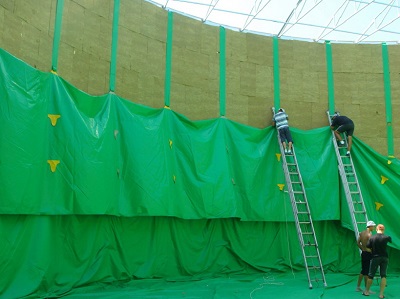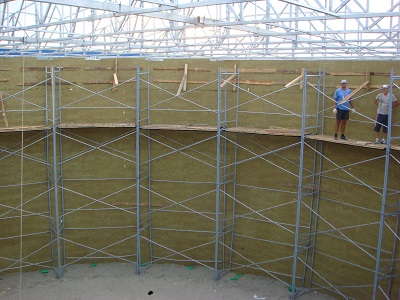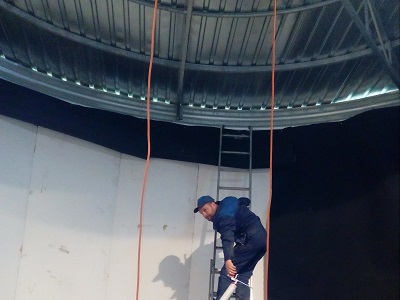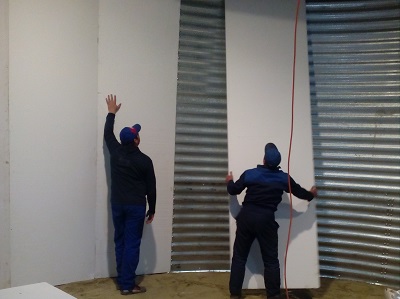Insulation and heating
Insulation and heating are used to operate the tank in winter. The need for insulation or heating, insulation thickness, heating capacity are determined solely by thermal calculation:
- if the water in the tank is renewed frequently (once every 2-3 days new water is partially drained and filled), then heating and insulation are not required. Tanks in the system of centralized water supply of human settlements are never insulated, because there is a constant circulation of water;
- if the water is renewed at least once every 7-10 days, the tank must be insulated to prevent water freezing;
- if the water is renewed less than once every 10 days, then both insulation and water heating are required. Based on this, modular fire tanks need not only to insulate, but also to install a heating system.
Mineral wool or polyfoam with a thickness of 50-140 mm and a density of 80-110 kg /m3 is used to insulate the side surface of modular tanks. Mineral wool is glued inside the galvanized frame of the tank, then closed with geotextile and a insert. The roof of the modular tank is insulated with extruded high-density foamed polystyrene.
The liquid heating system in the tank consists of a thermoelectric heater TEH (or immersion heat cables), temperature sensors and a control system. If the temperature behind the sensor drops to a minimum (usually + 1 ° C), TEH is switched on.
The power of the TEH varies from 4 to 12 kW. Energy consumption is small, because in the insulated tanks TEHs work total no more than 1 month a year.





